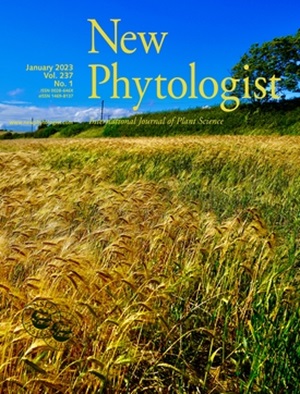OsMADS55 nuclear translocation enhances OsATL15-mediated thiamethoxam uptake in rice for controlling the brown planthopper
IF 8.1
1区 生物学
Q1 PLANT SCIENCES
引用次数: 0
Abstract
- Plants have evolved sophisticated mechanisms to respond to the absorption and transport of external substances. Transcription factors (TFs) play pivotal roles in regulating the expression of genes involved in the transport of various substances in plants. However, how TFs coordinate the initiation of key transcriptional networks involved in cellular localization/transport in response to pesticide uptake and translocation in rice remains largely unclear.
- In this study, we report OsMADS55 (SVP-group MADS-box transcription factor 55), a membrane-anchored TF that interacts with the thiamethoxam (THX) transporter OsATL15 at the plasma membrane (PM) and acts as a negative regulator. The OsMADS55 mutant enhances the uptake and translocation of THX, thereby improving brown planthopper control.
- Interestingly, we found that upon exposure to THX, OsMADS55 translocates from the PM to the nucleus, where it dissociates from OsATL15, thereby increasing the availability of OsATL15 at the membrane to facilitate THX uptake.
- Our results uncovered a mechanistic framework underlying the OsMADS55-OsATL15 module that precisely controls the uptake and translocation of THX, providing insights for improved pest management and reduced dependence on pesticides.
OsMADS55核易位增强了osmads15介导的水稻噻虫嗪摄取以控制褐飞虱。
植物已经进化出复杂的机制来响应外部物质的吸收和运输。转录因子(Transcription factors, TFs)在调控植物中各种物质转运相关基因的表达中起着关键作用。然而,在水稻中,TFs如何协调参与细胞定位/运输的关键转录网络的启动,以响应农药的吸收和转运,这在很大程度上仍不清楚。在这项研究中,我们报道了OsMADS55 (svp组MADS-box转录因子55),这是一种膜锚定的TF,可与thiamethoxam (THX)转运蛋白OsATL15在质膜(PM)上相互作用,并作为负调节因子。OsMADS55突变体增强THX的摄取和易位,从而改善对褐飞虱的控制。有趣的是,我们发现暴露于THX后,OsMADS55从PM转移到细胞核,在那里它与OsATL15解离,从而增加OsATL15在膜上的可用性,以促进THX的摄取。我们的研究结果揭示了OsMADS55-OsATL15模块的机制框架,该模块精确控制THX的吸收和转运,为改进害虫管理和减少对农药的依赖提供了见解。
本文章由计算机程序翻译,如有差异,请以英文原文为准。
求助全文
约1分钟内获得全文
求助全文
来源期刊

New Phytologist
生物-植物科学
自引率
5.30%
发文量
728
期刊介绍:
New Phytologist is an international electronic journal published 24 times a year. It is owned by the New Phytologist Foundation, a non-profit-making charitable organization dedicated to promoting plant science. The journal publishes excellent, novel, rigorous, and timely research and scholarship in plant science and its applications. The articles cover topics in five sections: Physiology & Development, Environment, Interaction, Evolution, and Transformative Plant Biotechnology. These sections encompass intracellular processes, global environmental change, and encourage cross-disciplinary approaches. The journal recognizes the use of techniques from molecular and cell biology, functional genomics, modeling, and system-based approaches in plant science. Abstracting and Indexing Information for New Phytologist includes Academic Search, AgBiotech News & Information, Agroforestry Abstracts, Biochemistry & Biophysics Citation Index, Botanical Pesticides, CAB Abstracts®, Environment Index, Global Health, and Plant Breeding Abstracts, and others.
 求助内容:
求助内容: 应助结果提醒方式:
应助结果提醒方式:


